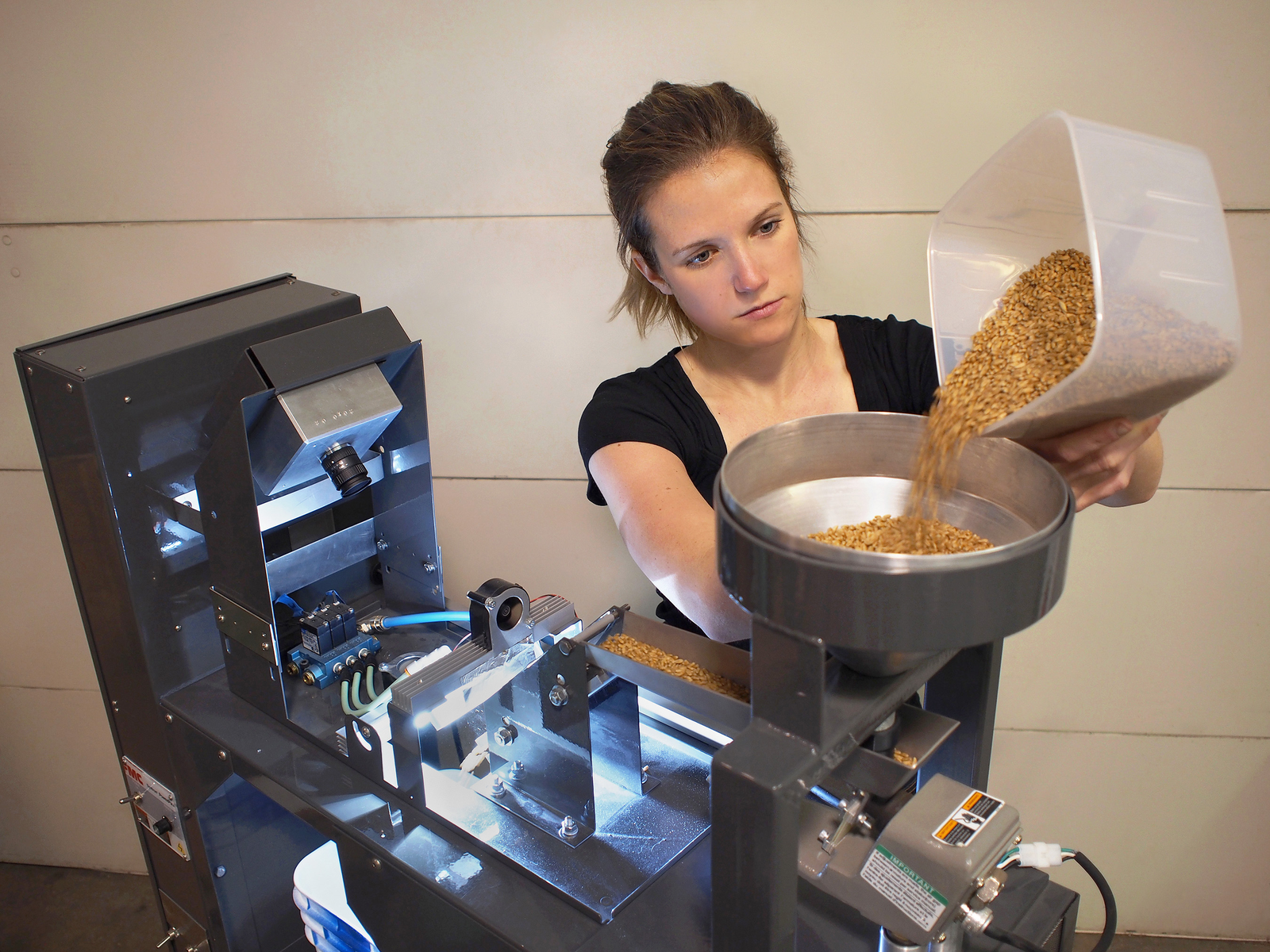New seed sorter separates wheat types with 98% accuracy

A new seed sorted has been developed that can help plant breeders separate seeds from those they want to those they don’t want with impressive accuracy.
The sorter, developed by a US Department of Agriculture (USDA) scientist, Thomas C Pearson in collaboration with National Manufacturing in Lincoln, Neb, is compact, portable and proving to be very versatile.
In tests the sorter can help wheat breeders by differentiating kernels of hard red wheat from kernels of hard white winter wheat, with 98.6% accuracy. Plus it was accurate 94% of the time in separating yellow from brown flax seed. Sorting is critical because the two are used for different purposes.
Some university plant breeders rely on the sorter to discern and discard spotty peas or to reject wheat kernels that show coloration associated with Fusarium head blight, a costly disease of wheat and barley.
Sorting begins when seeds, placed in a vibrating hopper, start sliding down any of three adjacent chutes. After a seed falls off the end of its chute, a colour camera, equipped with an image sensor (a complementary metal-oxide semiconductor, or CMOS) snaps an image and sends it, via a circuit board, to a chip for processing.
The chip uses pre-programmed data to determine whether the seed’s surface texture and red, green, and blue color values more closely match those of an “accept” seed than those of a “reject.” Seeds that appear similar to “rejects” are quickly directed, via a puff of air from an air valve, into the “reject” container, while the desirable seeds fall neatly into the “accept” bucket.
Source: ARS – Pearson has documented his work in peer-reviewed articles published in Applied Engineering in Agriculture, Computers and Electronics in Agriculture, and the Journal of Food Measurement and Characterization. His studies are highlighted in the July 2013 issue of Agricultural Research magazine.











